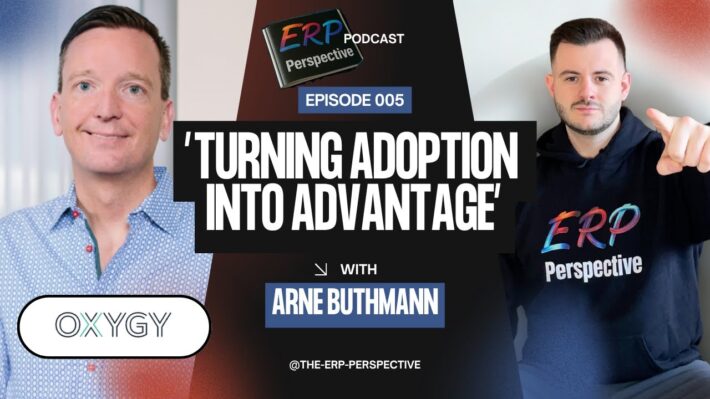By: Thomas Bertels (Partner, Valeocon) and Sheelagh Cawley-Knopf (VP Pipeline Strategy & Management, Takeda)
Peter Drucker was right – ‘What gets measured gets managed.’ However, most organizations spent enormous effort on measuring and managing too much of the wrong things. This article outlines some of the key issues leaders face when it comes to managing with metrics and offers a practical framework to help an executive define a core set of metrics for their organization – a scorecard – and use them to drive performance.
Significant investments, low returns
Consider the time and money spent collecting, preparing, analyzing, presenting, explaining, and arguing about metrics in your organization. In theory, metrics should help focus scarce resources on the most significant opportunities – in the real world, it can be very challenging to determine the actual impact of a change or decision.In almost every organization we have been involved with over the last twenty years, metrics have been a major source of frustration:
- “We have too many measures and dashboards – nothing is a priority.”
- “We measure activities instead of outcomes – we are showing improvements on all metrics, but it does not move the needle.”
- “Measurement is not aligned across functions – as a result, there is needless internal strife and conflict.”
- “We don’t have the data that we need, instead we try to make do with the data we can get.”
- “What we measure does not tell us what is really going on – what is the story?”
Elevator Doors, Watermelons, and Waiting for Godot
Beyond frustration, metrics can create significant problems. Most leaders have encountered one of the following archetypical issues:
- The Elevator Door Metric: The ‘door close’ button in most elevators is actually not doing anything – but it gives those who press it a sense of control. Similarly, many metrics are not actually connected to the outcomes the organization is trying to accomplish. Yet, they exist, and significant effort is invested in pushing those buttons. A simple example is measuring the number of employees that completed a training program – it tells us nothing about the actual capability of those employees.
- The Watermelon Effect: Watermelons are green on the outside and red on the inside, just like many scorecards. Very common in command and control type cultures is that all indicators on the scorecard are green, showing progress, but yet the performance of the organization is poor.
- Waiting for Godot: Samuel Becket’s famous play about a character who waits for the arrival of someone named Godot who never actually arrives, illustrates the plight of companies that try to align their measurement systems to a top-down multi-year goal – most never get to the end of the journey. For a large global organization, cascading the strategic objectives throughout the organization to the individual employee easily turns into a multi-year journey, which is rarely completed. In the meantime, everybody is waiting – and nothing happens.
Make Your Metrics Matter
For leaders dissatisfied with their current metrics we suggest a pragmatic set of recommendations for defining effective metrics and using them to drive performance:
1. Start with purpose
The starting point is to ask yourself: What is the purpose of your organization? The purpose needs to be defined for the actual organization you are leading. If you are responsible for customer service or marketing, why does your organization exist? Starting with the purpose is powerful, because it creates meaning. And meaningful work matters. We have known for decades that meaningful work is one of the most powerful intrinsic motivators. Most teachers do not think about their work as “successfully delivering the common core curriculum for a given school year.” They are inspired by the opportunity to help young people reach their full potential. Why does your organization exist? This requires careful thought – and an external point of view. Asking “Why does this organization exist? What do we want to be?” reveals the ‘True North’ – the constant purpose of the organization. Starting with the purpose is key. Constancy of purpose is crucial to generate and sustain the sustained commitment of your team.
2. Define the Big Ys
Once you defined the purpose, the next step is to define the big Ys. Big Y’s are BHAG’s: Big, hairy, ambitious goals – a concept made popular by Jim Collins[1], who spent decades understanding the difference between good and great companies. BHAG’s cannot be accomplished in days or months. They help to mobilize an organization to reach beyond the immediate grasp. John F. Kennedy’s 1961 speech, where he asked congress to help land a man on the moon, is a popular example. You can only have a small number of BHAGs. BHAG’s inspire breakthrough thinking as well as relentless follow-up – pounding away at the many obstacles towards achieving the goal. The key is to engage the key stakeholder inside (and outside) the organization to avoid being too internally focused. Stakeholders can range from upper management to functional partners and external customers.
3. Agree on what moves the needle
Having a shared understanding of the levers that move the needle on the Big Y, the BHAG, is critical. Yet, many leadership teams have never spent time aligning on the business logic and leading indicators of performance. The tendency is to focus on lagging indicators, a historical confirmation of past performance which are easier to measure and not on leading indicators which are predictive of future performance. Since each executive has their own personal mental model for how the business works, getting everybody to align on a common framework is extremely powerful. Beyond that, itcan be a great communication tool to help everybody in the organization understand how their work ties to the overall objective.
4. Don’t look for perfection – go for good enough
When it comes to building a measurement system, perfection is truly the enemy of good. The driver trees often reveal aspects of your organization that are not covered by existing metrics at all. And where you have data, the data is not exactly what you need. It is easy to end up with a long laundry list of measures you would like to see. The temptation is to start building spreadsheets and integrate systems to minimize manual data collection.
We suggest an alternative path: Start putting together a draft scorecard, working with what you have. Create a visual mock-up using the data you have. Where you don’t have data, consider proxy measures or using judgment for the time being. Start by putting up an initial scorecard, even if not complete or 100% accurate. At the same time, start making a list of the measures you are currently using, and assess whether they are conflicting with that you are trying to accomplish. If so, start thinking about how to replace or retire these metrics.
Starting with a more manual dashboard has tremendous benefits: it is fast (building the mock-up should not take more than a week) and it helps to get the kinks out before investing in automation and systems integration. The increased visibility of data which feeds performance measurement systems and dashboards can also engender increased focus on data quality as employees see how performance is being measured It is crucial that the leadership team remains closely involved during this time – this is not something that can be handed off to the staff.
5. Review openly
Reviewing metrics publicly is a great way to build a shared understanding of what matters, what works, and how to move the needle. The Compstat tool, which helps police officers fight crime is a prominent example of the impact of such timely and transparent reviews. Effective reviews encourage dialogue and learning. Is the needle moving? If not, what actions and initiatives should be considered to make progress? They also offer executives the opportunity to communicate how the business works and clarify the role each associate has in achieving the overall objective.
How often a metric should be reviewed should be based on the underlying business rhythm. Measuring too frequently can increase the noise level, while measuring too infrequently can lead to missed opportunities. The same is true for cadence – not every metric needs to be reported at all levels of the organization. Oftentimes, it is sufficient to provide those charged with making the decision with the information.
6. Stay the course but prune frequently
Even when implemented using an agile, rapid prototyping approach, the effort required to launch a new set of metrics is substantial. Nothing is more detrimental than making constant changes to the key gauges. To really make progress on a BHAG and towards the larger purpose requires sustained effort over a period of time (for most large companies at least 18 months). However, that does not mean your scorecard is static.
Given the increased rate of change both outside and inside most organizations, metrics need to be reviewed and pruned frequently. An annual audit is a good discipline to make sure you have the right metrics to manage the business and phase out those that are no longer relevant.
[1] The term “Big Hairy Audacious Goal” was proposed by James Collins and Jerry Porras in their 1994 book entitled Built to Last: Successful Habits of Visionary Companies.






